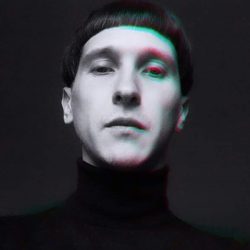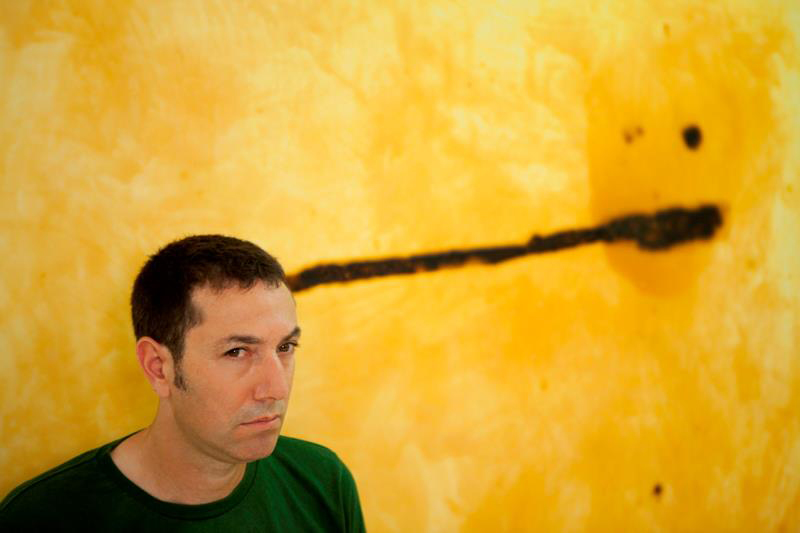
OLEG KOMAROV
...Page is loading...

Great New York City area, USA
by Yaara Shehori
"I will let go of the plot, and contemplate time" * (Paul Valéry)
Softness
Imagine a world that is all softness, where roads are soft and walls are soft and the floor is soft. A world in which fingers and toes and elbows and hips and ribs and heels encounter only softness. A world the body can sink into. That is the world Gal Wertman seems to...
by Yaara Shehori
"I will let go of the plot, and contemplate time" * (Paul Valéry)
Softness
Imagine a world that is all softness, where roads are soft and walls are soft and the floor is soft. A world in which fingers and toes and elbows and hips and ribs and heels encounter only softness. A world the body can sink into. That is the world Gal Wertman seems to offer. But this softness is different from that with which we usually wrap and pad the world around us, which is made of fabrics or furs and is meant to protect us from sharp corners. In Wertman's works, it is a softness which is not soft, which is solid, firm. Perhaps we should say: Imagine an epidermal world. A world with the touch of latex-skin. A world like a second skin.
Like shed-off skin ,Latex has been part of Wertman's works ever since he was part of the artistic duo Aya & Gal ,which worked together in the 1990s and exhibited in Israel and abroad (Documenta X, Kassel 1997; the Museum for Contemporary Art, MuHKA, Antwerpen, 1997; the Jewish Museum, New York, 1998). Aya & Gal used latex as a basic element in their works – as a coating over body and face, as a suit of clothes or a mask. In Wertman's work alone since the duo's joint work ended, latex has a different presence. In the present exhibition, crystallized after years of artistic silence, latex lies between the viewers and the ground they stand on, as a flexible, soft floor installation which responds to being stepped on. It also functions within the well-defined boundaries of the drawings as a painterly amoeba with breachable, changeable boundaries.
Latex – a material with medical and sterile connotations, as in surgical gloves, also associated with contexts of desire (or its obstruction), as in condoms – reacts to its environment like human skin. It responds to heat, is tanned by the sun, grows beauty spots. In the shift from acting as part of a duo to working on his own, Wertman seems to have forgone the body that was covered in latex, remaining with the coating alone. Thus, the question that hangs in the air – who or what envelops, who or what is enveloped – is a question of interiority versus exteriority. For when there is no interiority, everything is an exterior surface. The body, too. Painting, too. The transition to using latex as a coating that envelops nothing is a shift from the interior to the surface – of the painting, of the floor, of the absent body.
Wertman's use of latex seems to be a reflection on Eva Hesse’s work modes with various materials, including latex. Like the bodily imprint preserved in matter when, in a few gestures Hesse brought together the physical and vulnerable with viscous latex to create a formal world that undermined its own rules, Wertman’s latex remembers his manual touch.
Transitional Object
Over a hundred years after The Time Machine by H.G. Wells was first published, Wertman's works invite us once again to travel in time – a journey that cannot be undertaken without an object to bend and contract time. But Wertman's objects (paintings, sculptures) do not only trap time, they also correspond to Winnicott's notion of "transitional objects" – an intermediary object, assisting the emotional transition between the psychic and external reality; it is the child who endows the object with meaning, but the object was already there, as if waiting to be charged with significance. Wertman's objects, too, look like they had been there, just waiting to be culled from humanity's common memory. Both archaic and futuristic, they are an in-between zone, a potential twilight space. This is not time travel that takes us to the past or future; rather, it is a journey that sets time itself in motion and makes it tangible, drawing it towards us in the shape of a soft latex object – disposed to becoming attached, but also covering and preventing touch.
The Archaeology of the Future
Gal Wertman calls upon us to remember something we have never experienced; a vague, deceptive sense of standing on the brink of a memory that may not have happened yet. It is no wonder that the environment created by Wertman brings Science Fiction to mind. The works are placed like fossils that have no context. They seem familiar and foreign at the same time. Perhaps they are remnants of a civilization that has yet to be created. Wertman's archaeology of the future does not expose the past – that is, us; it reveals uninhabited spaces, empty rounded abodes simulating the human body, a polymeric reality.
The paintings fuse together different planes and times: gold leaf fashioned into frames endows works that seem to have no religious context with an iconic quality; a repeatedly flickering architectural element seems to have been taken from an unfinished architectural plan for a building ,that one cannot quite picture; seemingly organic bodies, like amoebas or monocellular organisms are cast next to each other; abodes made of latex crowd together, protective covers that cover nothing at all. The drawing on the dense paint surfaces may be the only option of movement in these huge expanses. And above all, the paintings are bathed in strong, blinding light, a spotlight that creates a shadowless landscape – exposing a past and another past and a future and a present; a temporality consisting of simultaneous times. All is transparent, and yet there is an enigma. Time, folded into an object, bursts forth through it and strikes us, throwing us backwards – into softness.
* From Valéry's essay on H.G. Wells' book The Time Machine, "Le temps", Mercure de France, XXX, 1899.
Gal Wertman Lives and works in NJ, USA; Studied in the Art Department, Bezalel Academy of Art and Design, Jerusalem,
1988-1990; Until 2001 was part of the duo Aya & Gal; Art Projects and Exhibitions 1993 - "Third Person," group exhibition, Bograshov Gallery, Tel Aviv; Curators: Michal Heimanand Ariella Azoulay - "Antipathos: Black Humor, Irony and Cynicism in Contemporary Israeli Art," group exhibition, The Israel Museum, Jerusalem; Curator Tami Katz-Freiman (catalogue) - 1994 - One-Person Show, Bograshov Gallery, Tel Aviv; Curator: Ariella Azoulay (catalogue) - "The Suitcase", group exhibition, Bograshov Gallery, Tel Aviv; Curator: Ariella Azoulay - "Mi Yemalel," group exhibition, Bograshov Gallery, Tel Aviv; Ariella Azoulay - "Ta-asiya," group exhibition, Artists' House, Tel Aviv; Curator: Nehama Golan (catalogue) - "90-70-90", group exhibition, Tel Aviv Museum of Art; Curator: Rona Sela (catalogue) - "Tel-Hai 94", contemporary art biennial; Curator: Gideon Ofrat - "Export Surplus" (ArtFocus 94), group exhibition, Bograshov Gallery, Tel Aviv; Ariella Azoulay - 1995 - Naturalize / Soft Camera, video project, Herzliya Museum of Contemporary Art; Curator Äim Deuelle Lusky (print work) - "Terminal", group exhibition, Bograshov Gallery, Tel Aviv; Curator: Ariella Azoulay - 1996 - Naturalize / Local Observation Point, YMCA Tower, Jerusalem, interactive computer and postcards project, The Israel Museum, Jerusalem; Curator: Suzanne Landau - Naturalize / 0.7, interactive computer project, in the exhibition "Hide and Seek" ArtFocus 96, Teddy Kollek Stadium, Jerusalem; Curator: Ami Barak (print work) - 1997 - Naturalize / 0.71, in the exhibition "Out of Senses", the Museum of Contemporary Art (MuHKA, Antwerpen, Belgium; Curator: Flor Bex (catalogue) - Naturalize / Local Observation Point, Kassel, interactive computer and postcards-project, Documenta X, Kassel, Germany; Curator: Catherine David (catalogue) - Naturalize / A to Z, live video and internet broadcast, part of the Documenta X "100 Days" events, Kassel, Germany; Curator: Catherine David - 1998 - Naturalize / 100 m, video and internet project, The Jewish Museum, New York; Curator: Heidi Zuckerman-Jacobson (leaflet) - Naturalize / 0.72, in the exhibition "Double rivage", Centre régional d’art contemporain Sète, France - "Condition Report: Photography in Israel Today", group exhibition, The Israel Museum Jerusalem; Curator: Nissan Perez - "After Rabin: New Art from Israel", group exhibition, The Jewish Museum, New York; Curator: Susan Goodman (catalogue) - 1999 - Naturalize / Skins, in the exhibition "Skin-Deep: Surface and Appearance in Contemporary Art", The Israel Museum, Jerusalem; Curator: Suzanne Landau - 2001 - "Armory Show," group exhibition, Tel Aviv Museum of Art; Curator: Ellen Ginton - 2007 - "Time Machines, Time Traps" one-person exhibition, Gordon Gallery, Tel Aviv; Curator Amon Yriv. - 2011 - "Shiri in the Solar Sistem", one-person exhibition, Gordon Gallery, Tel Aviv; Curator Amon Yriv.